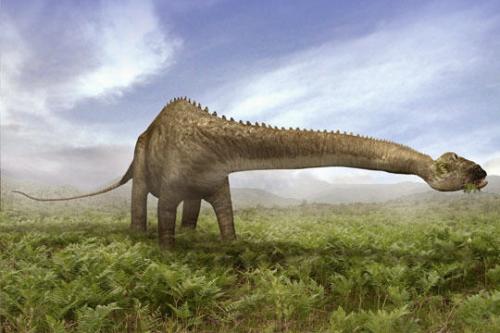10 Facts about Diplodocus
Find out the interesting information about the extinct genus of diplodocid sauropod dinosaurs on facts about diplodocus. S.W. Williston was the first who discovered the fossils of diplodocus in 1877. In 1878, Othniel Charles Marsh coined the term Diplodocus for the first time. The neo-Latin term was taken from Greek which means double for diplos and beam for dokos. The generic name Diplodocus was applied because the underside of the tail featured the double beamed chevron bones. Let’s check other interesting facts about Diplodocus in the following post below:
Facts about Diplodocus 1: a unique feature
At first, the scientists believed that the chevron bones were the unique feature that Diplodocus owned. Due to the extensive researches and discoveries, they were found in nondiplodocid sauropods and other members of diplodocid family. Find facts about dinosaur here.
Facts about Diplodocus 2: the habitat of Diplodocus
Diplodocus is believed to live at the late of Jurassic period in the present day western North America.

diplodocus images
Facts about Diplodocus 3: the location of Diplodocus fossils
The middle to the upper Morrison Formation was the location of the Diplodocus fossils’ discovery. The fossils were dated back during the end of Kimmeridgian age around 154 to 152 million years ago.
Facts about Diplodocus 4: the domination of dinosaurs
There were several gigantic sauropod dinosaurs which dominated the Morrison Formation. They included Camarasaurus, Brontosaurus, Brachiosaurus, Barosaurus and Apatosaurus.

facts about diplodocus
Facts about Diplodocus 5: how to identify Diplodocus
It is not difficult to identify Diplodocus because of the special characteristics of this animal. They have four sturdy legs, long neck, long tail and common sauropod body shape.
Facts about Diplodocus 6: the longest dinosaur
Diplodocus is considered as the longest known dinosaur this present day. The experts believed that Diplodocus coexisted along with the predators like Ceratosaurus and Allosaurus.

diplodocus pictures
Facts about Diplodocus 7: the body of Diplodocus
The hind limbs were longer that the fore limbs. Diplodocus also has a whip like tail. The posture of Diplodocus is horizontal. The sturdy legs that it had were always compared to the suspension bridge. They supported the skeletal structure of the body. Check facts about dinosaur fossils here.
Facts about Diplodocus 8: Diplodocus carnegii
Diplodocus carnegii had a complete skeleton. Today, it is known as one of the longest dinosaurs. The length is 82 feet.

diplodocus pic
Facts about Diplodocus 9: Diplodocus hallorum
Another fossil is Diplodocus hallorum. The experts believed that it must be even larger even though only the partial fossil remains.
Facts about Diplodocus 10: the display
Carnegie Museum of Natural History houses the complete Diplodocus carnegii skeleton.

diplodocus pics
Are you interested reading facts about diplodocus?



